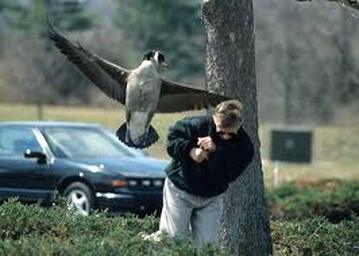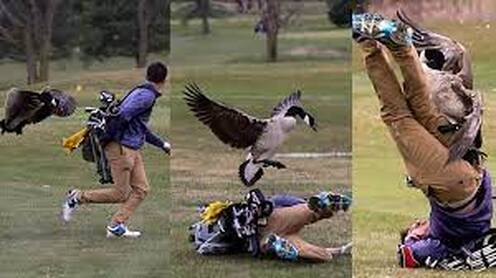 New Jersey you have a problem! Nuisance Resident Geese have taken over your parks, golf courses, and residential ponds and it is becoming a mess. Goose Control is and should remain a high priority for anyone dealing with this spike in bird numbers. Resident Geese numbers have been on the steady rise since 1993 which according to the USDA was right around 40,000 then boomed to 110,000 in the year 2003 and has been slowly increasing year after year. Nuisance wildlife management is the term given to the process of selective removal of problem individuals or populations of specific species of wildlife. Other terms for the field include wildlife damage management, wildlife control, and animal damage control to name a few. Right now, in the State Of New Jersey for example the number of complaints and the demand for wildlife Management is increasing. Most Canada goose damage complaints in New Jersey involve accumulations of feces on lawns and walkways at homes, schools, hospitals, corporate campuses, and public parks. Goose feces damage property, compromise overall quality of life, and have the potential to pose serious health threats due to the presence of disease-causing organisms. Other damage associated with geese includes overgrazing of lawns and recreational fields, and goose aggression and human injury during the nesting season. At Loomacres Wildlife Management we have been fighting the battle against Geese for almost 20 years! By using a wide variety of methods, we can ensure you that your goose problem can be managed. Management of the problems associated with Canada geese requires development of an integrated damage management program that includes a variety of safe, practical, effective, and legal techniques. Nuisance wildlife management is the term given to the process of selective removal of problem individuals or populations of specific species of wildlife. Other terms for the field include wildlife damage management, wildlife control, and animal damage control to name a few. What We Do: This process may sound complicated to some but for us it is simple. Once we have one of our Certified Wildlife Biologist come assess your situation and do a risk management analysis, we can then begin to put together a strategy. Most cases tend to be unique so there is no “silver bullet” or “quick fix” method! There are several different factors that take place like time of year, nearby habitat, food source, etc. Once our Biologist has come up with a Wildlife Hazard Management Plan, we can begin implementing that strategy using either Lethal (depredation) or Non-Lethal tactics such as hazing or habitat management. How We Do It: For needs outside of the regulated hunting season and any other state-specific goose control programs, the U.S. Fish and Wildlife Service issues goose depredation permits to qualifying individuals and municipalities. These permits allow for the removal of geese, typically 1-2 per day, but must be done in conjunction with active non-lethal methods. Please see Federal Migratory Bird Depredation Permit for information and the permit form. If the need for Lethal Goose Control is in order Loomacres will obtain all necessary permits on behalf of our client. For those cases that require Non-Lethal Goose Management Methods we at Loomacres Wildlife Management use an arsenal of techniques listed below.
If you are currently experiencing a problem with Nuissance Geese wreaking havoc on your ponds, parks, lawns, or they are in a place where they shouldn’t be please fill out the contact information below and Loomacres Wildlife Management will be in contact with you shortly. Loomacres - 800-243-1462 Bringing Wildlife Management to a Higher Level ©
0 Comments
Leave a Reply. |
Sales & Marketing
|

 RSS Feed
RSS Feed